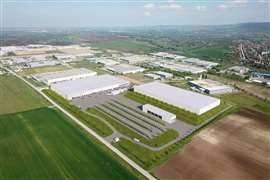Editor's Comment: The need for efficiency is changing machine design
14 June 2013
.gif)
The combination of a diesel engine and high-pressure hydraulics has been at the heart of excavator design for decades. There have been refinements along the way, with electronic management systems, finer and more accurate controls and of course lower and lower exhaust emissions from the engines, but the key components have remained diesel engines and hydraulic pumps.
Is that set to change? In parts of Europe and the US, the burden of legislation on diesel engines has become so expensive that there is a move towards electrically driven machines in static or semi-static applications. Scrap handling excavators are a good example of this, and of course all-electric face shovels have been common in mining for decades.
There is a lot to recommend all electric excavators – less noise, no emissions on-site and often significant savings in running costs. The downside is apart from mini excavators, which might be able to run on batteries, most machines would be limited by being tethered to an electricity supply.
But another change that seems to be coming is hybrid technology. Komatsu has led the way and since 2008 it has sold more than 2,000 of its 20-tonne class hybrid machines, which recover waste energy from slewing motions. With the global excavator market well in excess of 250,000 machines per year, sales of 2,000 hybrids over the course of five years or so are a mere drop in the ocean, but it does illustrate some demand is there.
Applying the dictionary definition of ‘hybrid’ to machinery would imply two power systems, but is this necessarily a good thing? Converting between mechanical and electrical energy and back again is likely to lead to losses, and the extra components to run two systems will always add cost to a machine.
So at the risk of offending dictionary compilers, Caterpillar takes the term ‘hybrid’ to mean any system that captures waste energy, and has applied this thinking to a 36 tonne excavator, which uses hydraulic accumulators to capture useful energy that would otherwise be lost as heat as the upper structure swings and brakes.
Fuel consumption savings look similar to those for electrical hybrids in percentage terms, but without the extra cost of an electrical system. Keeping it all hydraulic means greater simplicity and less for service engineers to worry about as they will already be familiar with the technology.
And then there is Liebherr’s example, a concept 40 tonne excavator shown at Bauma using both hydraulic and electrical waste recovery systems, which allows the diesel engine to be down-sized.
Such a divergence in technologies is to be expected in the early days of hybrids. Different companies will see different advantages in different systems, and the equipment market is so broad that one particular technology may work well in one situation but not pay-off in another.
But what should equipment buyers make of all this? The key is to work out what makes the best business sense. Potential fuel savings from hybrids have to be balanced against the increased purchase cost of the machine, and the speed that the pay-back is achieved will depend on fuel costs over time and the number of hours worked. If you know all that, you will know if a hybrid is right for you.



